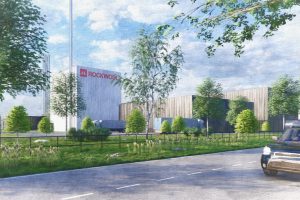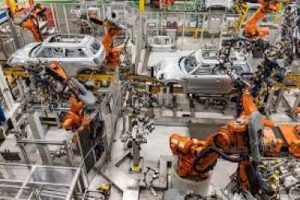Budget: Hopes boosted for manufacturing-led recovery

THE Chancellor’s announcement that the focus of Britain’s economy needed to move away from a reliance on financial services produced a welcome boost for manufacturers today.
Measures announced in the Budget will boost thousands of manufacturing businesses around the country and increase hopes of a sector-led export-driven economic recovery.
Mr Osborne said there would be a small reduction in the rates for capital allowances, which would remain broadly in line with economic depreciation.
“For the majority of plant and machinery assets, the rate of allowance will fall from 20 to 18%, while the allowance for longer-lived assets will fall from 10 to 8%,” said the Chancellor.
“In other words businesses will still receive full tax relief on their qualifying expenditure, but over a longer timeframe.”
Mr Osborne said he had also decided to reduce the Annual Investment Allowance to £25,000 a year, to ensure support was focused on investment by smaller firms.
“Over 95% of businesses will continue to have all of their qualifying plant and machinery expenditure fully covered by this relief.
“Manufacturing as a whole will pay less tax,” he said.
Mr Osborne said he had listened to arguments that changing these allowances during the early stages of the economic recovery could be disruptive, so he had opted to delay the reductions in capital and investment allowances to April 2012.
“This will give businesses the extra early advantage of the tax cuts, which start to come in from next year,” he added.
Firms are also expected to benefit from the lowering of Corporation Tax, which will be reduced from 28% to 24% during the next four years – at a rate of 1% per year, while the small companies tax rate will be cut to 20%.
While growth predictions were disappointing, they bore out earlier forecasts by influential economists such as Ernst & Young’s ITEM Club.

It forecast that while business investment was likely to fall back by another 6.5% this year – after falling by more than 19% last year – the situation would be reversed by 2011 with investment rising sharply to 10% and then 14% the year after.
Peter Spencer, the ITEM Club’s chief economic adviser, said the export-led recovery was unlikely to kick-in until after 2011 as world trade probably would not regain its 2008 peak until the end of 2011.
In an accurate prediction he said the immediate prospects for the economy remained dismal and it was unlikely that the UK would achieve 1% growth this year.
Mr Spencer had said Treasury forecasts were unreliable as it had based its policy on a presumed bounce-back in the home market, driven by consumer spending.
Stephen Sandys, Director of Business tax Services at Ernst & Young said reductions in corporation tax was good for companies of all sizes, but the timing of changes to capital allowances would need to be understood by business.
He said: “There are some headline tax rate reductions which are good for investment. That’s going to be balanced however by some future reductions in the rate at which companies can claim tax relief on investment allowances. They’ll be reduced from 20% to 18%, but not until 2012, which is clever because he’s funding corporate tax reductions out of current spending.”
Lord Kumar Bhattacharyya, head of Warwick Manufacturing Group, said it was a Budget of “necessary pain” which he broadly welcomed.
And the Labour peer added: “Even if Labour had stayed in government there would have had to be a lot of cuts.
“This was needed in order to deal with the deficit.”
Lord Bhattacharyya said Midlands manufacturing would be helped by the reduction in Corporation Tax. “That will have a positive effect.”
But it would be necessary to await October’s Comprehensive Spending Review to see what would be the implications for research and development.
- Budget: At a glance
- Budget: Public sector loses out to the 80:20 principle
- Budget: Cheer for those on state pension
- Budget: Hopes boosted for manufacturing-led recovery
- Budget: OBR underestimates fiscal tightening – ITEM Club
- Budget: Welcomes and warnings from property sector
- Budget: Entrepreneurs ‘can earn more’ says Chancellor
- Budget: Entrepreneurs ‘can earn more’ says Chancellor
- Budget: Levy on banks to raise £2bn a year
- Budget: Sigh of relief at caution on CGT








